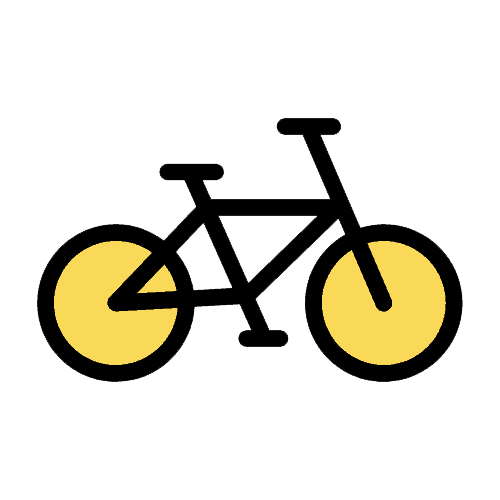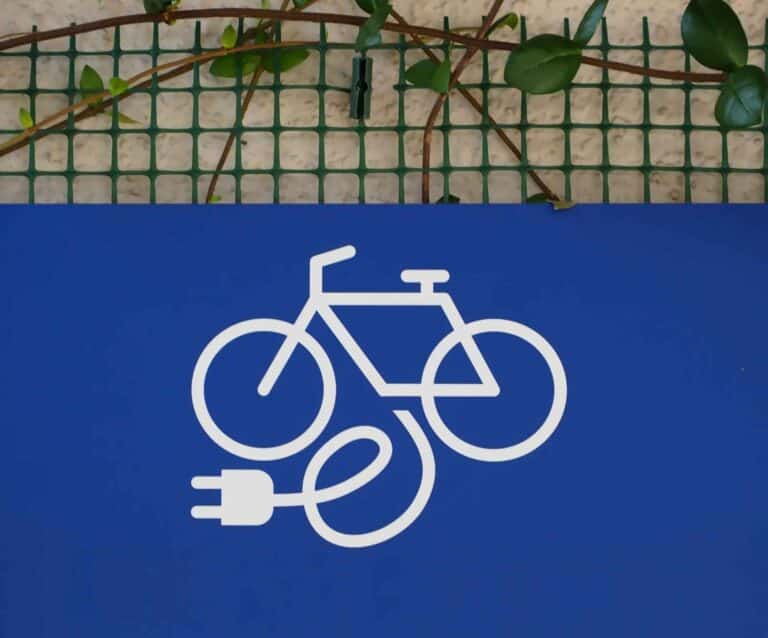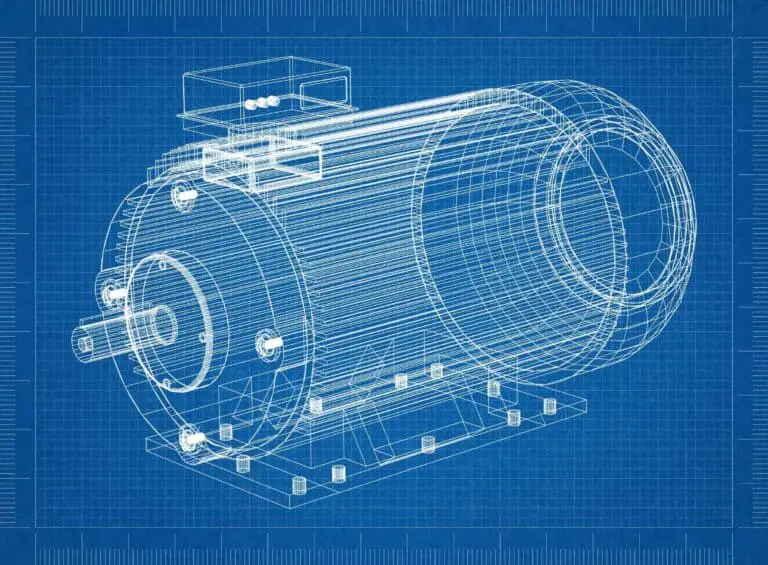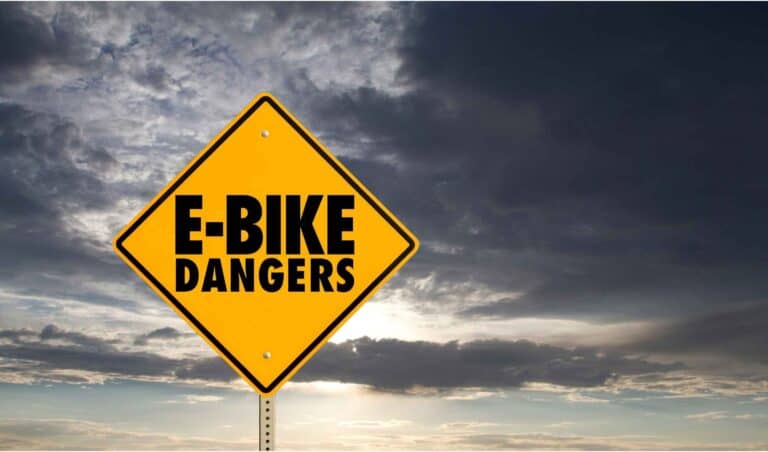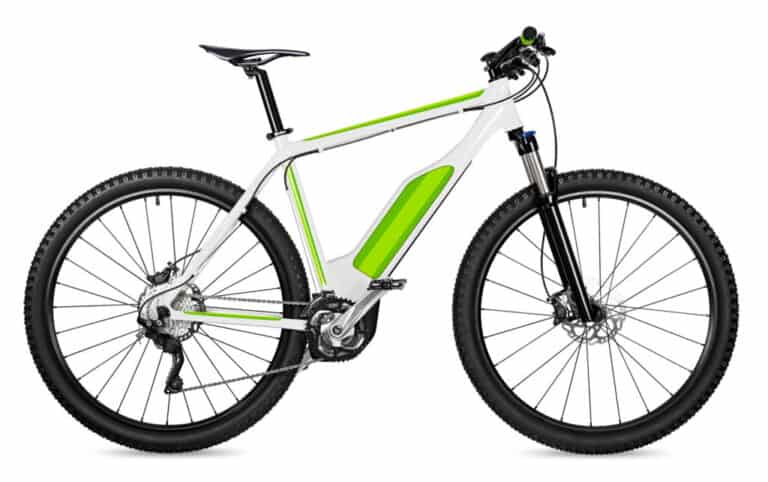Electric Bike Torque: The Ultimate Guide To eBike Torque
I recently talked to a friend who shared that his electric bike had excellent torque. I realized that I barely knew anything about electric bike torque, so I researched it. First, I looked into what exactly is electric bike torque?
As a general rule, electric bike torque is the measurement of the ability of the eBike motor to rotate the back wheel of an electric bike. Moreover, e-bike torque measures the rotational power of the motor. Torque is the force applied to the electric bike’s crank arm multiplied by its length.
Electric bike torque changes considerably when the electric bike motor is turned on. So let’s dive into what electric bike torque allows you to do, how important e-bike torque is, and how much you need to enjoy your ride.
What is Electric Bike Torque?
Electric Bike Torque is the turning force at the wheels of an electric bike, and it mainly allows an eBike to accelerate. Torque is the product of force and distance. Force is produced when the rider pedals and distance is the length of the crank arm.
For example, if you weigh 180 Pounds and stand up on your bike pedal, which is typically 7 inches long, you would have a torque of 1,260 Inch Pounds.
This example calculates electric bike torque when the eBike motor is turned off.
What Does Electric Bike Torque Allow An eBike To Do?
As a whole, electric bike torque allows electric bikes to accelerate, helping them to climb up steep hills. Higher torque generates more force for your eBike. Primarily, torque makes it easier for your eBike to accelerate from a full stop to full speed more rapidly.
Torque has a direct impact on the overall performance of your electric bike. For example, it prevents the motor from stalling and the electric bike from coming to a halt.
Having a lot of electric bike torque means that you can travel up steeper inclines much easier. Moreover, if needed, you will have to do a lot less pedaling as well.
Most electric bikes that use high torque motors are electric mountain bikes and e-bikes for uphill riding.
Sometimes, just getting your electric bike moving is difficult if you are carrying a heavy load. This is especially true if you have chosen to exceed your manufacturer’s weight load limit specifications. (Which we do not recommend)
If your electric bike can output increased torque, it may be possible to get an overloaded eBike moving. However, the most challenging part of moving a heavy electric bike is initially getting it moving.
Having a motor capable of delivering that strong rotational force you need is the difference between a stalled electric bike and an eBike miles down the road.
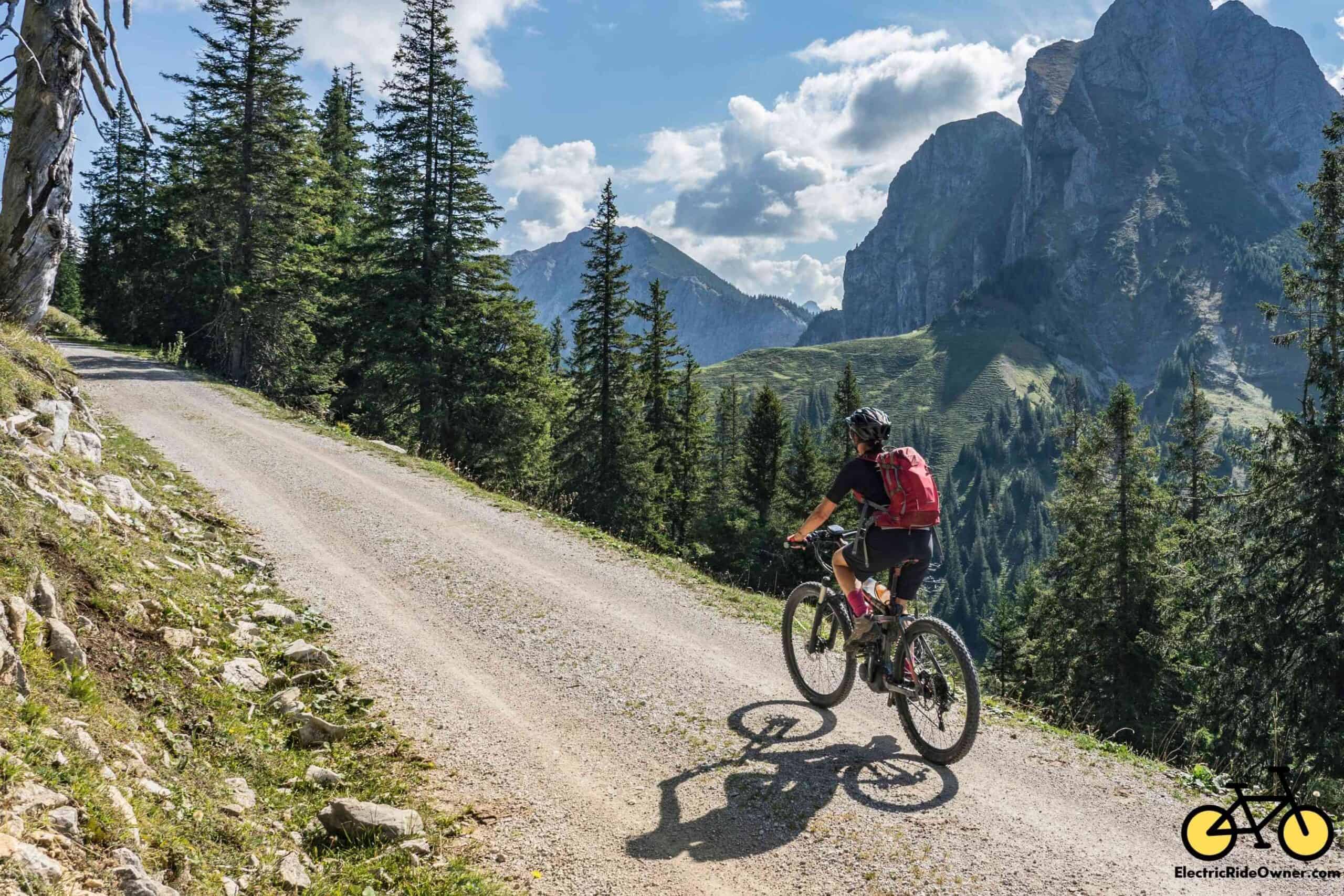
How Important Is Torque On An Ebike?
As a general rule, torque is significantly important on an electric bike. This is because an electric bike cannot perform well without appropriate torque. In addition, higher torque allows eBikes to move forward on slopes and climb increasingly higher inclines.
Torque helps determine the amount of pedaling an electric bike needs from the rider. For example, compared to a higher torque electric bike, a lower torque electric bike would require more force from the rider to climb up hills.
Since the motor of low-powered e-bikes has lesser rotational force than high-powered e-bikes, they have a hard time climbing inclined slopes.
E-bike torque plays a vital role in the world of electric bikes, especially if you’re into uphill biking. Therefore, you should pay attention to the amount of torque that your e-bike’s motor offers when deciding on buying an e-bike.
How Much Torque Does An Electric Bike Have?
On average, lower-powered electric bikes usually have a torque of around 50-newton meters. In contrast, high-powered e-bikes typically have 80-newton meters or more.
In electric bikes, torque is the turning force of an e-bike’s motor. Remember, the eBike motor is one of the components responsible for producing the pedal-assist functionality of electric bikes.
Technically, the torque of electric bikes depends on the type of motor used. Some e-bike motors offer 50-newton meters of torque, while others offer up to 120 newton-meters torque.
How Much Torque Does An Electric Bike Need?
On average, a low-powered e-bike needs approximately 50 to 60-newton meters of torque. In comparison, a higher-powered electric bike needs 85 or more newton meters of torque to operate effectively.
The amount of torque an electric bike delivers varies from eBike to eBike. For example, suppose you are looking for the ideal electric bike for climbing challenging steep hills. In that case, an electric bike with a torque of 70-newton meters or above is suitable for you.
A lower-powered electric bike is not the best choice in cases where you need to climb steeply inclined slopes. It is more suited for flat terrains. If you mainly do city riding where climbing hills is unnecessary, you would not require as much torque on your electric bike.
To put it simply, if you’re riding in an area where hills are everywhere, you probably need an electric bike with high torque.
Why? Because you wouldn’t want your electric bike to stop in the middle of a hill and roll backward because your motor did not have enough turning force to move forward.
In that case, you won’t be able to continue your ride up the hill without pedaling.
“The more torque I can come up with, the better.”
—Tim Lincecum
How Do You Increase Ebike Torque?
As a whole, electric bike torque can be increased by overvolting the motor and switching to a higher voltage battery that ranges from 36- 52V. However, there are specific wattage motors where increasing an eBike Torque is impossible.
Switching to a higher voltage battery can increase torque.
If you have a low-watt motor such as a 250 Watt motor, you cannot do much to increase the torque. However, e-bikes with a higher watt motor can be paired with larger batteries, which can give your bike incredible climbing power.
However, replacing your existing battery with a new battery is costly. Thus, if you’re worried about spending too much, this is not the best option for you.
Suppose you have a hub motor electric bike. You can increase the torque by increasing the amp, which is possible by getting a new controller. On the other hand, if you have a mid-drive motor, you can improve your torque by changing your gearing.
An electric bike motor is one of the most costly components to replace or enhance. Therefore, before buying an electric bike, it is always best to look at the e-bike motor and battery performance. Also, make sure you know what you are buying.
How Is Ebike Torque Calculated?
As a general rule, eBike Torque is calculated by multiplying force by distance. A custom dynamometer for your electric bike can give you an average calculation of torque throughout your ride.
It is not easy to calculate torque on your own. However, some manufacturers provide some pretty helpful torque graphs. The manufacturers of your e-bike motor will usually provide a manual of your motor specifications with the torque information listed.
In addition, there are performance charts available for different motors that share valuable information. You can use this information to compare and contrast different electric bikes and their associated torques.
Electric Bike Torque (Nm) Vs. Watts (Power)
Watts is a measure of power, and electric bike torque is a measure of the rotational ability of the wheels which is measured in Newton-meters (Nm). So to calculate power, you have to multiply torque by the rotational speed.
Watt is the energy required to complete a task at a specific pace, whereas torque is linked to acceleration.
Watts, or motor power, refers to the work delivered at a specific time. Motor power and e-bike torque are interconnected.
As mentioned above, power is the product of the motor’s torque and rotational speed (RPM). These pieces of information are found in the e-bike motor specifications.
With that being said, suppose you have two different e-bikes with motors having the same rotational speed but with different torques— 50-newton meters and 70-newton meters.
The 70-newton meters e-bike can generate higher motor power than the 50-newton meters e-bike.
Just like torque, every e-bike has different power levels that determine the electric bike’s climbing abilities. For example, suppose you have two e-bikes with 700W and 500W power, respectively.
The e-bike with 700W power can climb much higher slopes when compared to the 500W e-bike.
The average electric bike has 250W of motor power, ideal for riding on flat terrain. Therefore, when selecting an e-bike, it is essential to keep both torque and watts in mind to make sure you are buying an electric bike to fit your needs.
Suppose you want to learn more about the difference between the two. In that case, you can watch the video of Micah explaining the difference between watts and torque.
eBike Torque VS. Speed
As a general rule, eBike Torque measures rotational force while speed measures distance traveled over time. You will accelerate and reach higher speeds faster with increased electric bike torque. As you attain higher speeds, your e-bike torque will diminish. eBike Torque and speed are inversely proportional.
Electric bike torque plays a massive role in acceleration. The more significant your torque, the more acceleration your electric bike can achieve. This is especially true when you are starting from a complete stop.
As your electric bike increases in speed, your torque will continuously decline. As a result, the rotational force of your e-bike will be at its lowest value when you reach the max speed of your ride.
When traveling at relatively higher speeds, having increased torque starts to matter less and less. However, having a high level of eBike Torque is most important when getting your electric bike moving from a complete stop or when climbing an inclined slope.
At high speeds, electric bike torque isn’t essential.
Do I Need A Torque Arm On My Ebike?
As a general rule, if you are using a 750 Watt motor, you will need a torque arm regardless of whether you have a front motor or a back motor on your eBike. However, if you have a 500 Watt front motor, it is highly recommended that you use a torque arm on your electric bike.
As a whole, a torque arm supports the axle of a powerful motor. You can find it in various shapes and sizes, but usually, one size fits most electric bikes. Of course, you also have the option to get a custom torque arm for your electric bike.
Torque can open the dropouts of electric bikes. A torque arm would protect the dropouts and help them resist the motor’s torque.
On top of that, the torque arm protects your electric bike and your electric bike’s motor.
Electric bikes do not necessarily need torque arms, but they are highly recommended. However, it is highly advisable to have a torque arm with a DIY electric bike for safety reasons. If you are looking to add a torque arm to your e-bike, check out this torque arm which will fit most Front, Mid Drive, and Rear Hub Motors.
For a motor that is 250W or less, a torque arm isn’t needed as the electric bike will work fine without it, but for 750W or more motor, a torque arm would be necessary.
The bottom line is you should always get a torque arm if you have a high-powered electric bike. It is better to be safe than sorry.
If you are interested in installing a torque arm in your electric bike, take a look at this video.
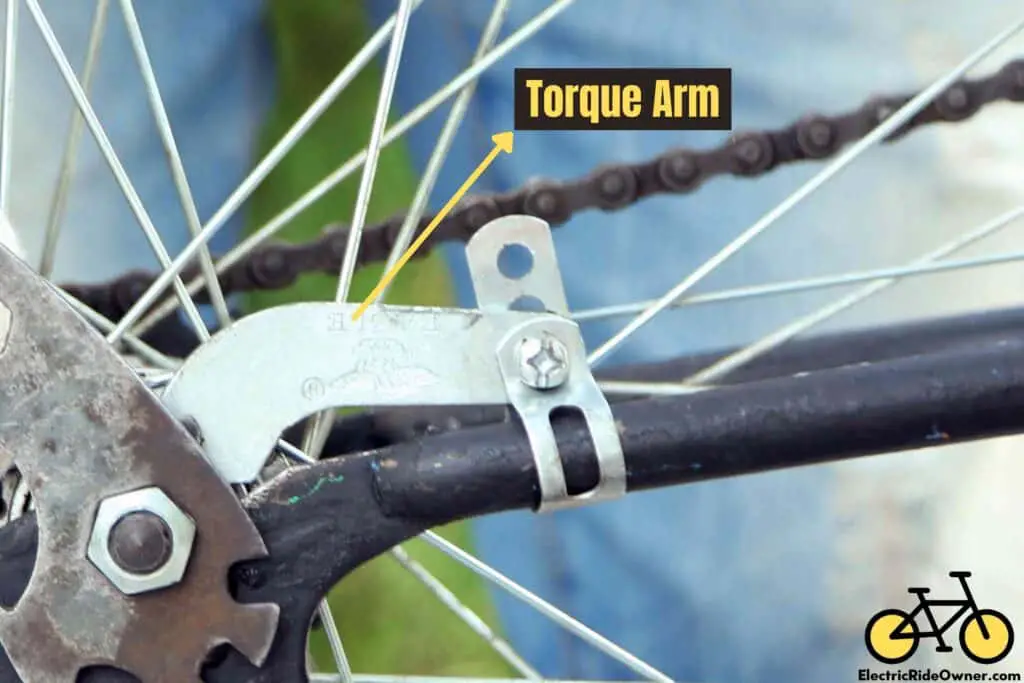
What Is A Torque Sensor Electric Bike?
As a general rule, torque sensor electric bikes are pedal-assisted e-bikes equipped with a torque sensor that controls the power output of the electric bike. This torque sensor is more costly than the cadence sensor but performs better.
Unlike the cadence sensor, the torque sensor does not measure how fast the rider pedals but how hard they pedal. As a result, the torque sensor makes the ride more intuitive and smoother.
Safety is one of the most important things to consider while riding. This torque sensor ensures the safety of riders by detecting and controlling the force applied by the riders when they pedal.
Choosing the best motor with high torque can significantly impact your riding performance when navigating steep hills. So, if you plan on buying a new electric bike or a new motor, always consider your riding environment and riding style.
Before replacing your current motor with a high torque motor, always check if the motor is compatible with your e-bike and e-bike battery.
What Is A Torque Sensor On An Ebike?
A torque sensor on an Ebike is an instrument that measures the pedal force applied by the rider and determines the amount of power needed for output. It is critical as it decides how much force the motor will supply to the wheel.
Electric bikes contain pedal assist sensors that turn on the motor when you pedal without a throttle. Torque uses a strain gauge, which is an advanced form of pedal-assist sensors.
The torque sensor modulates the power to the motor depending on the force applied to the pedal.
It helps save your energy. You can climb up rough terrains without feeling exhausted and enjoy a smoother ride, thanks to a torque sensor.
Can You Add A Torque Sensor To An Ebike?
As a general rule, a torque sensor can be installed on an e-bike. There are several torque sensor kits available for various motors. However, some electric bikes may not have the option to add a torque sensor, so it is best to check with your electric bike company.
A torque sensor can fit almost all e-bikes. In addition, they are compatible with both low and high-powered systems, so you should buy a torque sensor according to your electric bike’s motor power.
For different motors, torque sensors deliver a varied amount of maximum torque. In addition, torque sensors can be added to motors as low as 200W to as high as 1000W.
The torque sensor kits are easy to install and typically include all the necessary tools and instructions.
Which Is Better: Torque Or Cadence Sensor?
A Torque Sensor is better than a Cadence Sensor. This is because the torque sensor uses more advanced technology. Cadence sensors are found in most basic electric bikes instead of higher-end models.
The torque and cadence sensors are the two main types of pedal sensors in pedal-assisted electric bikes.
The Torque sensor is better than the cadence sensor because it offers incredible advantages. For instance, torque-sensing delivers a smooth and immediate motor activation, especially after stopping.
On the other hand, the cadence sensor is not preferable to use when you’re in an area where stop signs are everywhere. That is because the cadence sensor kicks in a bit hard when you start to pedal after a stop.
Cadence sensors are more like a switch; it turns the motor ON when you start pedaling and turn it OFF when you stop. On the other hand, Torque sensors determine the power that needs to go to the motor and increase/decrease the output.
Cadence sensors are inexpensive, but the pedal assistance is not as smooth as a torque sensor. Many riders say a cadence sensor is best paired with the throttle. However, throttle-assisted e-bikes are not legal in all states and countries.
On the other hand, a torque sensor is expensive, but it provides better and more satisfying results.
You can watch a video here about how the two sensors work.
What Ebike Has The Best Torque?
As a whole, Haibike Xduro AllMtn 8.0 is the electric bike with the best torque. Haibike Xduro is equipped with HPR 120S, with 120 newton-meters of torque.
We created a table below of different e-bikes that have incredible torque.
| Brand | Model | Motor Torque | Continuous Rated Power | Battery | Weight Capacity |
| Haibike | Xduro AllMtn 8.0 | HPR 120S(120 Nm) | 250W | 630 Wh (48V) | 264.6 lbs |
| Nox | Hybrid XC Trail (Sachs) | Sach RS(112 Nm) | 250W | 650 Wh (48V) | 330.7 lbs |
| Merida | eOne Sixty- 10k | Shimano EP8(85 Nm) | 250W | 630 Wh | 308.6 lbs |
| Haibike | AllMtn 6 | Yamaha PW-X2(80 Nm) | 250W | 600 Wh | 264.6 lbs |
| Trek | UM5+ | Bosch Performance CX (75 Nm) | 250W | 400 Wh | 300 lbs |
Haibike Xduro AllMtn 8.0
Haibike Xduro AllMtn 8.0 is an EMTB equipped with an HPR 120S motor. This motor has 120-newton meters of torque, providing incredible turning power to climb uphill faster.
Also, this HPR 120S motor can give you a maximum of 25 km/h assistance. On top of that, with 120 Nm torque, this electric bike can allow riders to conquer all kinds of terrains.
Another great feature of Xduro AllMtn 8.0 is its 4-piston caliper. These are powerful hydraulic brakes. With this, you can experience incredible stopping power even at high speed. We created an entire article on the effectiveness of hydraulic brakes, which you can access here.
This EMTB has an e-connect system that enables you to locate your electric bike if it gets stolen. What could be more incredible than that?
Additionally, the motor of Haibike Xduro AllMtn 8.0 has a continuous rated power of 250W. This means the motor can steadily produce 250W without overheating.
However, since Xduro AllMtn 8.0 uses a powerful motor, this electric bike is heavy. It weighs X pounds (28 kg). In addition, the Xduro AllMtn 8.0 requires a larger battery to match their heavy systems. However, the overall performance makes it worth the weight!
If you’re interested to learn more about this electric bike, visit here.
The Xduro AllMtn 8.0 is not the only electric bike with 120 Nm torque. However, in my opinion, I consider this electric bike to be the best due to its high torque combined with its other incredible features.
Nox Hybrid XC Trail
Nox Hybrid XC Trail is an electric mountain bike that uses a Sach RS motor. This Sach RS motor has 112 Nm torque. That means it has an incredible turning force that allows your e-bike to climb up hills effortlessly.
This electric bike can last up to 87 miles of riding with a maximum weight capacity of 330.7 lbs on one single charge.
Merida eOne-Sixty 10k
Merida eOne-Sixty 10k is an EMTB equipped with a Shimano EP8 motor. This motor produces about 85-newton meters of torque, giving riders confidence while climbing steep hills. In addition, the Shimano EP8 motor offers 250W of continuous rated power.
Additionally, this electric bike can carry a maximum weight of more than 300 pounds.
Furthermore, Merida eOne-Sixty 10k electric bike offers advanced technology features like an internal block energy system and a hydro-forming system.
Haibike AllMtn 6
Haibike AllMtn 6 is equipped with a Yamaha PW-X2 motor and a 600 Wh battery. Yamaha PW-X2 boasts 80 newton-meters of torque that enables you to climb up hills safely and ride in demanding terrains.
Like other motors in the list, Yamaha PW-X2 also has a continuous rated power of 250W. Additionally, the Yamaha PW-X2 motor gives riders 25 km/h assistance.
Trek UM5+
Trek UM5+ is an electric bike with Bosch Performance CX that delivers 75 newton-meters torque. This electric bike is typically used in commuting and for everyday use.
Though the motor torque of this electric bike is not as high as that of Haibike Xduro AllMtn, and Trek UM5+, it still performs well in steep hills.
On top of that, this electric bike offers an excellent comfort grip to riders.
If you are looking for an electric bike to buy, you can check our article, “How Much do Electric Bikes Cost? (Your Bottom Line). This article will help you decide on what e-bike to buy according to your budget.
